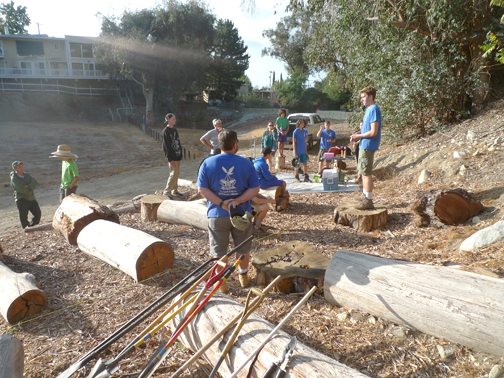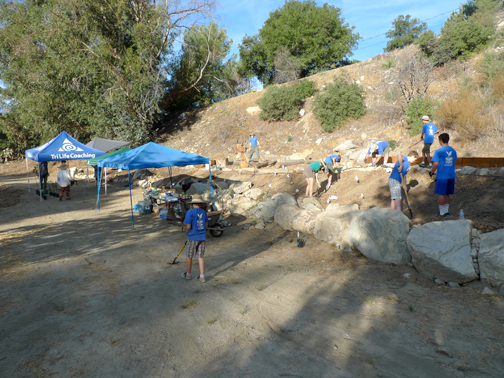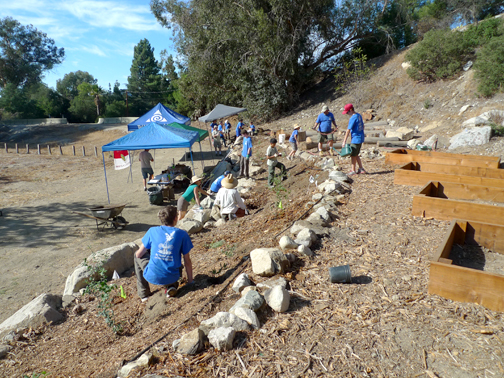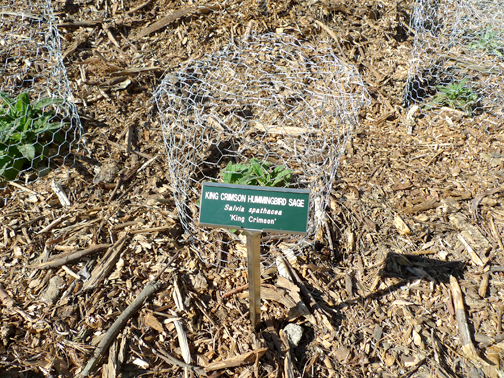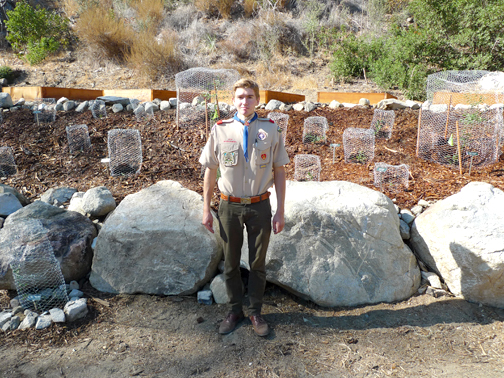
Brett Beer Tyler, 18, recently achieved the rank of Eagle Scout. Since 2008, Tyler has actively been a part of the Boy Scouts of America organization with Troop 319 of the Verdugo Hills Council.
For his Eagle Scout service project, Tyler oversaw the planting and irrigating of California native plants at the Rosemont Preserve. This project benefited the area in three key ways: beautifies the area, creates a teaching resource for visiting students and displays a variety of drought-tolerant plants that could be used in place of current lawns.
In mid-August, Tyler contacted the Eagle advisor for the Friends of the Rosemont Preserve (FORP), Richard Toyon, and found he could do a project for the Preserve. There was a bare slope that FORP wanted planted. In addition to the actual planting, it required an automated irrigation system because the Preserve isn’t always open.
Among the factors that had to be considered were plant size, deer resistance, compatibility with other plants and watering needs. Once plants were selected, he made detailed landscape plans outlining the eventual sun/shade interactions at maturity. Tyler also researched how to put together irrigation systems, and made possible layouts for those.
After countless designs, he presented his final landscape plan to the FORP committee meeting. After getting the green light, he set up two workdays: Sept. 27, 2014 would be for setting up the irrigation, and Oct. 4 would be for the actual planting. He coordinated volunteers and gathered supplies.
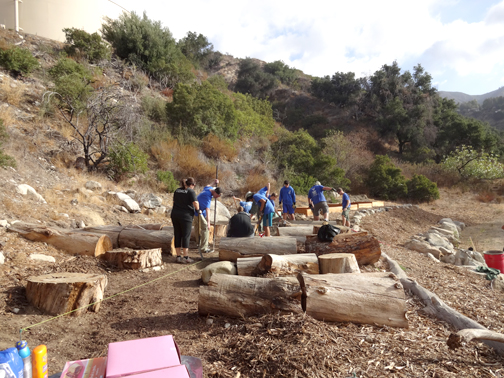
With the help of plumber Steve Miller, Tyler learned how to do some basic welding, and created a “T” intersection in the water line from which a separate line for irrigation could be run.
An early challenge, however, was immediately recognized. It was a problem that is familiar to anyone who has ever dug in “Rock”-Crescenta. Digging irrigation ditches was impeded and made tedious by the copious quantity of rocks present. But this obstacle was overcome through the sheer willpower of the volunteers, and the trenches were eventually ready.
Next the irrigation pipes were pieced together and installed, and then the trenches were covered back over. Lastly, Tyler set up the automated watering timer system.
A week later was the planting of the California native plants. Many of the plants were purchased from the Theodore Payne Foundation and many were generously donated by FORP biologist Roger Klemm. FORP member Barbara Goto also assisted by bringing some sapling trees that had been donated to the Rosemont Preserve. Once the planting was finished, the next step was the installation of deer cages. Ever since the Station Fire in 2009, the deer of the foothills have been looking for sources of food since the fire destroyed many of their usual resources, and have been eating plants that they usually wouldn’t touch. To ensure the survival of these new plants, it was imperative to cage them in protective chicken wire. As a finishing touch, Tyler installed placards on stakes to identify the plants by displaying both their common name, and their scientific name.
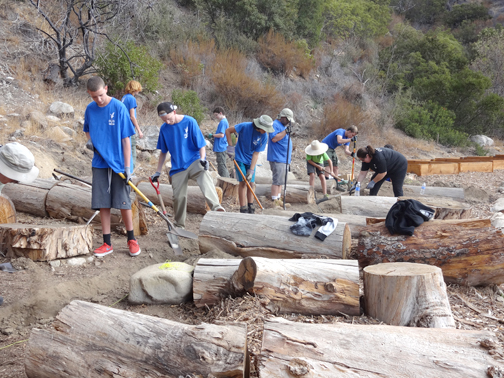
But then the project ran into a serious problem. The watering timer system’s connection to the irrigation pipes started leaking. As the main water line ran uphill, there was a greatly increased pressure on the line, causing the leak. The irrigation line couldn’t be turned on until the leak was fixed, but the plants would die if they didn’t get water. After some problem solving, and lots of hand watering of the plants, Tyler was able to fix the problem with the help of family friend Tim Alvarado. The pair installed a pressure regulator system, which did the trick and stopped the leak.
The final project cost was $1,653.73. The total combined service hours that went into making the project possible totaled 427.
Tyler also agreed to a Scout’s honor policy with the FORP, to check back every month to ensure the continued good condition of the project, take care of repairs as necessary, and to adjust the watering levels until the end of the school year.
“This has been very rewarding as I’ve gotten to see how my project has grown from when it was completed,” Tyler said.
For more information about the Rosemont Preserve, go to: http://www.arroyosfoothills.org/rosemont/.
